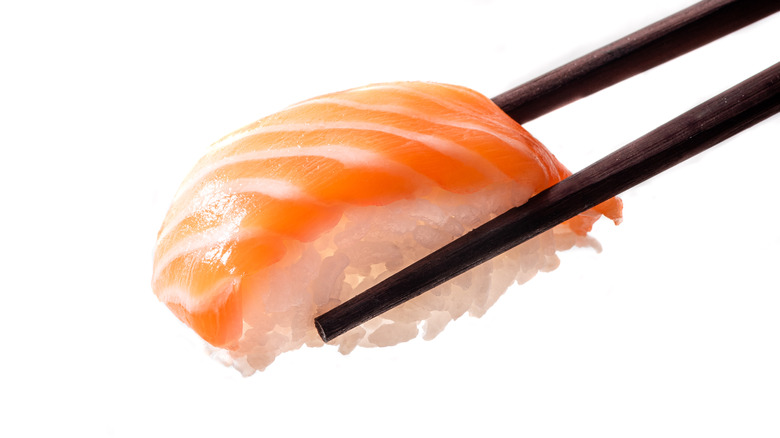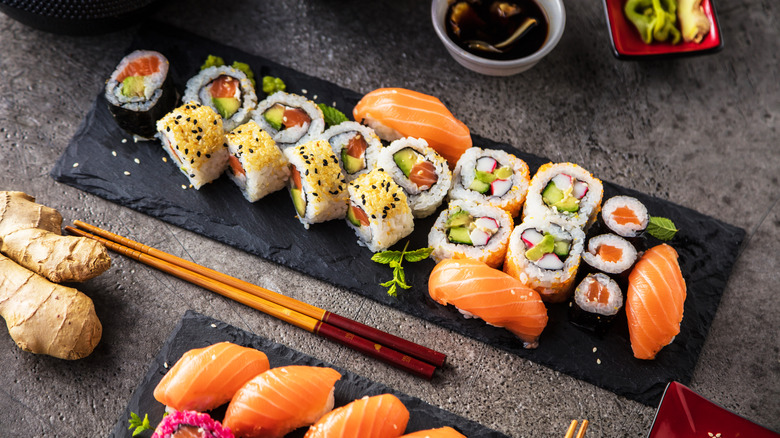How An Earthquake Led To Sushi Being Served In Restaurants
Although sushi originated in Southeast Asia many centuries ago, it's enjoyed all around the world today. In its earliest forms, sushi — or narezushi — was a means of preserving fish by packing it in salt. Later, narezushi was a mix of rice, fish, vinegar, and sake left under large stones to ferment, per Eat-Japan,
Using vinegar helped speed up the process. According to the District Table, sushi quickly became popular with street vendors and was considered "fast food of the olden days." Other vendors began to experiment with different ingredients and preparation methods. One man created hand-packed sushi — nigiri — that was even easier to enjoy on the go.
Sushi can still be enjoyed in casual settings today, but how did it go from being street food to being considered a delicacy? You certainly wouldn't expect that an earthquake caused this transition, but it did. And actually, the story makes a whole lot of sense.
Sushi: from street food to fine dining
On September 1, 1923, the Great Kanto Earthquake struck Japan, followed by a 40-foot tsunami, explains Smithsonian Magazine. The cities of Yokohama and Tokyo were particularly hit hard: first by the quake, then by the tsunami, and then by fire.
But one good thing did come out of all the destruction. According to Thrillist, real estate prices had dropped so low after the earthquake that sushi vendors were able to afford more permanent locations. Thus, sushi went from being served by vendors on the streets to being served by chefs in restaurants.
By the 1960s, explains Food52, sushi arrived in the U.S., and although the American version is very different from authentic sushi, people loved it. Today, Americans can enjoy sushi from the grocery store or make it at home, but there's no better way to experience it than in an authentic Japanese restaurant. Fortunately, you can find some of the absolute best sushi in the U.S. all across the country.

